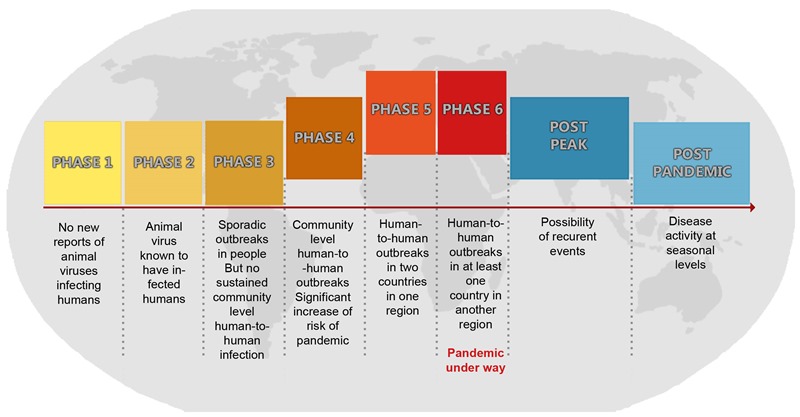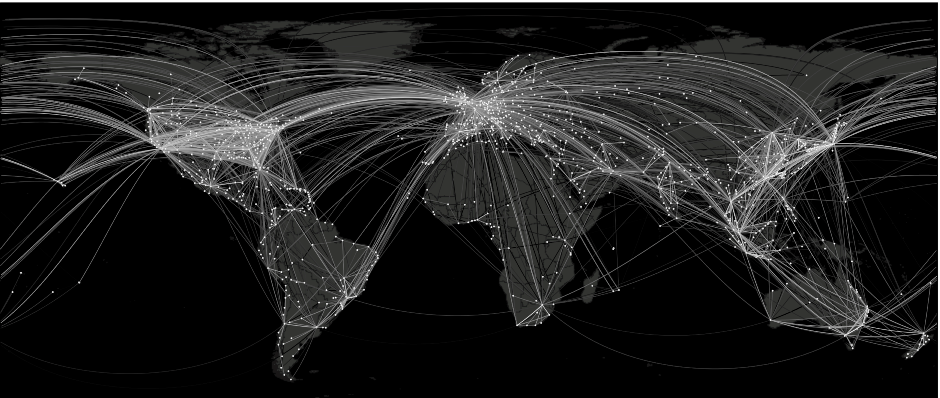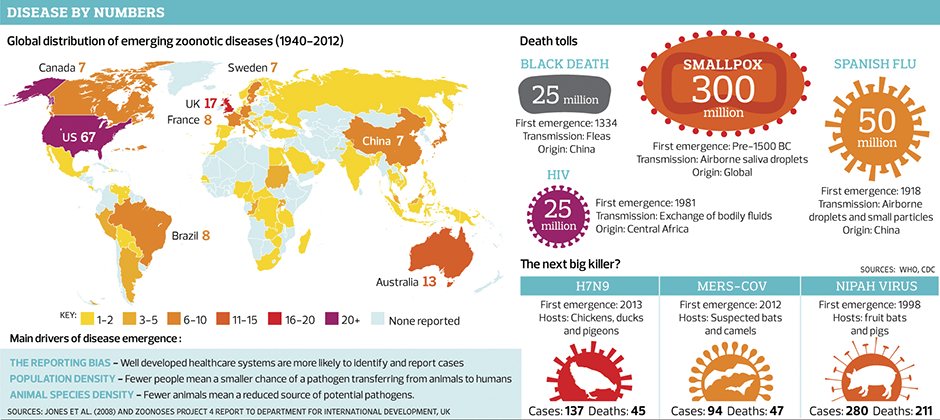World Health Organization Pandemic Phases

Disruption of Essential Public Services and Supplies
High population density is an undeniable influence that increases the spread of virulent organisms, including influenza. The last major pandemic was the Spanish Flu of 1918. The worlds population at that time was 1.6 billion, and it estimated that 17% of the population lived in an urban settings. There were only 15 cities with a population that exceeded 1 million. Today the world's population is above 7 billion, of which almost half live in urban environments that occupy only 3% of the earths surface. There are over 400 cities with populations that exceed 1 million.
Today's cities and to a large extent even rural areas are dependent on a highly coordinated effort by many people to provide the necessary goods and services required to function and survive. The ability to achieve these collaborative tasks would be disrupted by widespread illness and death.
Healthcare Services:
In the event of a major pandemic, hospitals and healthcare services will be quickly overwhelmed. While the first victims of a pandemic will receive excellent treatment, once the pandemic settles in, hospitals will begin to be full. The staff will be sick themselves, with some even succumbing to the disease. Hospitals will face shortages of everything from drugs and IV fluids to equipment. Before long, all available resources could become exhausted.
It is very likely that a pandemic would quickly exhaust available food, energy and medical resources, replacements may not be forthcoming. Thus, supply chain issues are expected to seriously compound the impacts of an influenza pandemic.
Food:
Modern food production and distribution relies on low levels of inventory, particularly to avoid wastes of perishable products on store shelves. On average, supermarkets have between 2 to 5 days of inventory of perishable goods (dairy, produce, meat) and about 1 to 2 weeks for other goods (pasta, canned goods, etc.). In the case of a pandemic, available food supplies could quickly be exhausted through hoarding behavior.
Energy:
The provision and distribution of energy is critical to the functioning of a modern economy and society. For instance, about 40% of the world's supply of electricity is generated by burning coal (50% for the United States). Coal power plants maintain a fairly low stockpile, about 30 days, and rely on a constant supply from major coal mining regions, which tend to be far away. While a pandemic would not directly damage energy systems, many energy distribution systems could be threatened through the removal of essential personnel from the workplace for weeks or months and impaired transportation capabilities to supply power plants.
Transportation and Pandemics
The Spanish flu of 1918 was able to spread across the globe using limited travel conditions in a mere 6 weeks. Today's modern transportation provides a far more faster and efficient means for an infectious disease to be transmitted around the world. In addition to the efficiency of modern travel, today's transportation industry provides services to a vastly larger amount of passengers.

Passengers using modern international and log distance modes of transportation, have an increased risk of exposure and thus the ability to transmit infectious diseases. The incubation time for the average influenza virus is between 1 and 4 days, more than enough time for an infected passenger to travel across the world, before symptoms appear.
Possible future Pandemics
There are approximately 1,500 microbes that are known to be a source of disease among the human population. Some of these diseases like HIV/AIDS, SARS, Influenza, Viral hemorrhagic fevers, and Nipah have caused regional or global epidemics that resulted in high mortality rate and/or significant economic losses.
Population growth and expanded interactions between people, animals and the environment over the coming decades are expected to increase the emergence of new pandemic threats. About 75 percent of new human diseases are caused by microbes that originate in animals.



